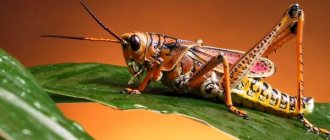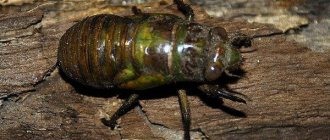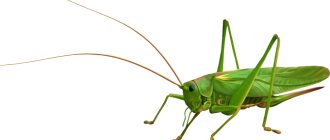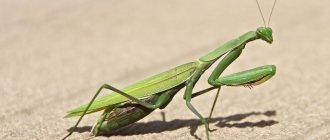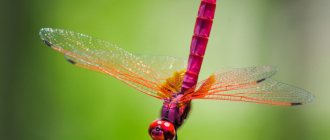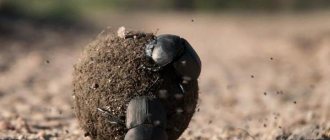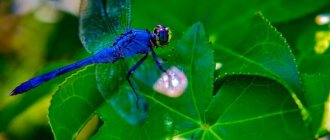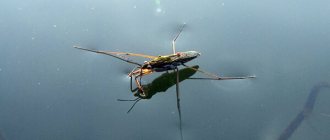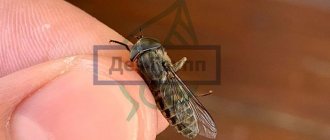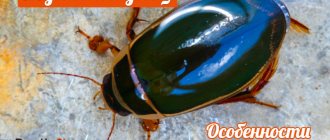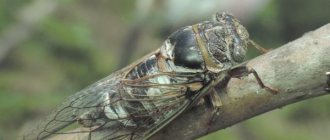There are many amazing creatures in the world. And many rare pets no longer seem so exotic to us when they find a new family and loving owners in city apartments. We have already talked about keeping iguanas, tarantulas and mini-pigs at home. Today we will talk about the stick insect - an amazing example of mimicry in nature.
The body of a stick insect looks like a twig or leaf of a plant. And, most importantly, as breeders joke, do not throw the pet out of the terrarium along with the garbage during the next cleaning.
Species diversity
The world of stick insects is much more diverse than it might seem to anyone interested in these insects - scientists have counted more than three thousand species of stick insects, 3 species are on the verge of extinction.
- The world's largest stick insect reaches a length of 60 cm and at the same time is the longest insect in the world!
- Another no less amazing species that lives both in the wild and among breeders is the Leafworm. From the name their interesting body shape is clear, disguising them as their natural habitat - tropical latitudes. Although leaf beetles do not look like stick insects, they all belong to the order of ghosts.
- A stick insect from distant Australia, outwardly similar to the middle link between common stick insects and leaf beetles. They are small in size - up to ten centimeters for males and up to twelve for females. Suitable for home keeping, breeding in captivity.
- But most often you can find Annamese and Indian stick insects as pets. The former are easier to maintain and reproduce in captivity. Both species are also small in size - 10-12 centimeters.
SELF-DEFENSE
The main enemies of stick insects are birds that look for food in the grass or among the branches and leaves of trees and bushes. Most of them hunt during the day, so it is important for stick insects to have good camouflage. The family of leaf insects belongs to the order of stick insects. These insects look like leaves. The narrow body, thin legs, rectangular head and brown or greenish protective coloration make many stick insects look like twigs. The bright green species look like grass stems or leaves. Insects hold tightly to the plant, rest their abdomen on it, stretch both forelimbs forward and slowly sway. So they very accurately repeat the swaying of plants in the wind. A frightened stick insect falls from a tree. If you still fail to deceive the enemy, then the stick insect flies. The open wings of some species are brightly colored. However, by folding its wings, the stick insect becomes “invisible” again.
Stick insect at home, where to start
Insects that are kept at home are usually small species, so they do not need huge terrariums.
- These bizarre creatures love height, so according to the standard it should be from thirty centimeters per individual up to 10 centimeters in size. Length and width start from 20 centimeters. Naturally, ventilation and a tight-fitting lid are necessary. Breeders also recommend plastic containers.
- Priming. If you want to observe the change of generations of stick insects, then it is worth preparing the soil where they lay their eggs. It is a simple mixture of peat, calcined sand and coconut shavings.
- Even in the safety of your home, they need to blend in with their surroundings. Various driftwood and twigs of non-poisonous plants will help them with this. You can decorate with pebbles and caves.
- The temperature for their comfortable existence should be within 20-25 degrees. This can be supported by an incandescent lamp, which is placed at a distance of 15 centimeters from the home to avoid overheating.
WHAT DOES IT EAT?
All stick insects that live in nature are herbivorous insects. They feed on the leaves of trees and shrubs, which they gnaw with their strong paired upper and lower jaws. Each species has its own “favorite” plants. Stick insects feed at night when their enemies are sleeping. However, even pitch darkness does not guarantee them complete safety, so these beetles behave carefully and try to create as little noise as possible that could give away their presence.
Most species of stick insects go searching for food alone. However, Australian stick insects fly in large swarms that can destroy all the leaves of even a large tree.
Feeding
For most domestic insects, you need to buy dead larvae, flies, and even mice... But not for the herbivorous stick insect. They will have enough leaves and branches of fruit and berry trees such as currants, apple trees, rose hips and others. It is not recommended to feed insects with oak leaves, which often harbor fungi that are fatal to stick insects.
- Food can be placed throughout the insectarium, so it will be green, beautiful and free for your pets. The main thing is to monitor and replenish food supplies on time.
- You need to prepare supplies for the winter. Dry some, freeze some, and, if possible, grow some at home in pots.
- Naturally, for the normal functioning of pets, the insectarium must have several types of edible plants.
- There is no need to provide stick insects with a water bowl for their own safety - instead, spray the walls and branches with a spray bottle. Try not to get on the insects themselves, so as not to cause them severe stress.
Insect species
In nature there is a fairly large number of a wide variety of stick insects, some of them are presented to your attention.
- Cordilleran stick insect. From Mother Nature, this representative of his family inherited a very impressive and extraordinary appearance. The color of this specimen consists of several colors: the main tone is black, with a slight silvery tint, somewhat reminiscent of the color of resin; you can also notice on the main background a certain velvety quality and a fine “pubescence” of a golden color. The eyes are golden in color and, as if tinted with lipstick, a bright red mouth. In its structure, it has two pairs of wings - upper and lower. The first ones are painted by nature in white and black tones, and the lower ones are in a rich red color. The yellow-black antennae are clearly visible on the beetle's face. Due to its extraordinary appearance, in many sources you can find the Cordilleran stick insect called the black beauty.
- Indian stick insect. Based on its name, it is already possible to draw absolutely accurate conclusions about the homeland of this creature. This species differs from its relatives in its relatively short body length, but at the same time they are quite thick and well-fed. The body length of the Indian beetle averages from 7 to 9.5 cm; there is evidence that females are slightly larger than males. Color varies from dark brown to gray-green tones. The entire body of this insect is decorated with dark spots.
- Spiny stick insect. He is a native of Vietnam; he first arrived in Russia only in 1999. This species is one of the few that continue their small genus only through sexual reproduction. The insect received its original name due to the fact that its body is decorated with some kind of thorns along the edges.
- 35 facts about foxes
- Animals of Brazil
- Tarantula spider
- 34 facts about lions
- Lynx
- 37 facts about cheetahs
- Giant stick insect. This amazing creature inhabits various trees and shrubs of distant Australia. Among all relatives, it is famous for the dimensions of its body; it can grow from 15 to 20 cm in length. Sexual dimorphism in this species is represented not only by body size, but also by color. The females are brownish-greenish in color with a small white patch on the front pair of wings, while the males, in turn, are brown and have only a few greenish dots on the chest.
- American striped stick insect. This is a native wingless resident of the United States, whose body is painted jet black, with several pink and yellow stripes placed vertically against its background. Only people with a clear history of allergies can keep such a pet at home, for the reason that the structure of this beetle contains protective glands on the front of the chest, which can “shoot” secretions when the insect senses a certain level of danger.
- Giant Caribbean stick insect. This inhabitant of the Caribbean islands also has a number of features. Firstly, it is quite large in size, the length of its body is on average 10–15 cm, but this is not the main thing. Unlike all other species of ghost insects, it is the male Caribbean stick insects that can fly very well. But nature has not endowed females with either the art of flight or real wings. These arthropods are colored in green-brown shades, their wings are almost transparent with only a slightly pinkish tint, and the elytra are brown, painted with white lines.
Reproduction
The stick insect does not live very long - about one and a half years. Therefore, most owners allow their reproduction. The main condition for the survival of the masonry is suitable peat or coconut soil.
Interesting fact: a female stick insect can reproduce independently without the help of a partner, but the offspring will also be female.
After hatching, the babies go through several molts before reaching adulthood. During each molt, the insect falls into torpor, which, depending on the species, can last up to several weeks. They should not be disturbed at this time so that the stick insect does not lose a limb. The time of maturation varies for all species, from approximately two months to a year.
FEATURES OF THE DEVICE
The pigment grains, which are found in special cells on the surface of the body of some stick insects, can expand and contract, so the entire flock can change color at the same time. The main function of cells is to regulate the body temperature of insects. Dark colors absorb more light and heat than light colors. In tropical areas, the temperature is high during the day, but at night it drops very much. While the sun is heating, the insect remains light-colored, so most of the sun's rays hitting it are reflected. In the evening, the body color darkens and the insect absorbs more heat.
Lifestyle
The stick insect is a master of camouflage and makeup . To avoid becoming prey, he acquired many defense mechanisms. They have an amazing feature: the shape of their body resembles tree branches or leaves. Most of the time it hangs on a branch. By completely merging with the plant, the stick insect becomes invisible. It can be mistaken for a thin twig, leaf or twig.
They are active mainly at night. The day is spent in a frozen state, firmly clinging to the branches. Suction cups on the tips of the legs allow you to hang even upside down. The exoskeleton is remarkably similar to the bark. And the joints imitate knots on branches . The insect eats the entire leaf, leaving not a single piece that could give away its location.
They are characterized by the phenomenon of catalepsy - imaginary death. When in danger, he literally dies. And he won’t get out of his stupor for anything in the world. Even if you bend it like a branch. Frozen in such an awkward position, the stick insect will not react even if its wing or leg is torn off, which it can grow back during the next molt. And when the threat cannot be overcome, the stick insects stand on their long hind legs and raise their tail, imitating a scorpion. And if such a demonstration of strength does not frighten the enemies, then the males release their protective liquid, with a characteristic unpleasant odor reminiscent of peanut butter.
If a stick insect moves, it is never in a hurry. Moves slightly swaying as it goes. So, he doesn't look like an insect. This is how a thin blade of grass sways in the wind. Usually stick insects crawl upward. It's not comfortable down there. It's dark and there are predators.
Stick insects are prey for birds . The bird sits on a branch for a long time, looking for an insect among the branches and foliage. Waiting for him to move at least a little. As soon as the stick insect performs any action, the bird will grab it with its beak.
